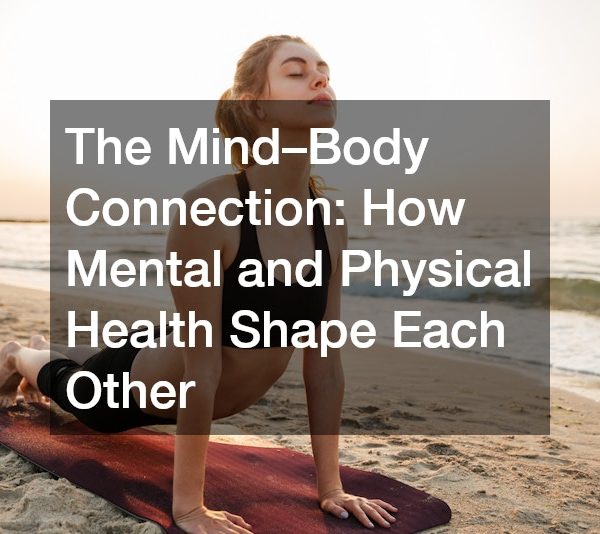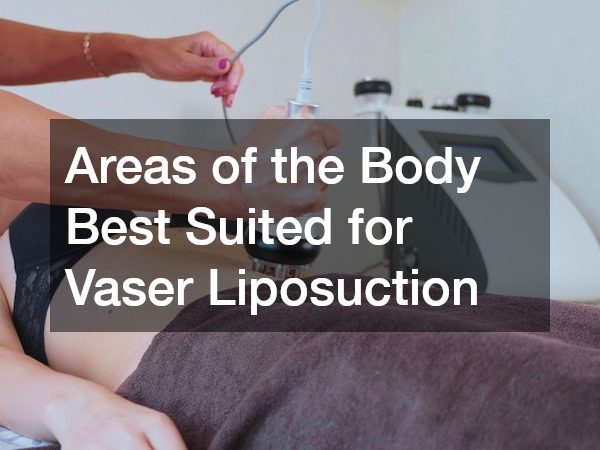In today’s fast-paced world, many adults struggle to make time for their well-being. Between demanding work schedules, family responsibilities, and social commitments, maintaining a healthy lifestyle can easily take a backseat. Yet, taking proactive steps to support overall wellness is one of the most effective ways to preserve long-term vitality, prevent complications, and improve quality of life. Caring for your physical, mental, and emotional health not only reduces the risk of illnesses but also enhances energy, focus, and overall happiness.
Wellness encompasses a wide range of practices, from staying physically active and maintaining cardiovascular fitness to monitoring nutrition, vision, and oral health. It also involves regular checkups, preventive screenings, and access to professional guidance when needed. Importantly, staying proactive is not limited to those already experiencing health concerns—it benefits anyone who wants to maintain optimal well-being and reduce the likelihood of future challenges.
The purpose of this guide is to provide adults with practical, actionable strategies that can be incorporated into even the busiest schedules. Each section addresses a specific aspect of wellness, offering tips, resources, and guidance that readers can apply immediately. Whether it’s learning simple exercises for joint strength, managing stress effectively, or taking advantage of preventive services, this guide covers all the essentials.
By embracing a holistic approach that supports both the body and mind, adults can achieve balance, prevent complications, and enjoy a higher quality of life well into the future. Additionally, this guide emphasizes small, consistent steps—because staying healthy is not about perfection but about forming habits that protect your overall well-being every day. The strategies outlined here are designed to be practical, realistic, and achievable for adults balancing work, family, and personal commitments.

Managing Joint Health and Mobility
Joint pain, particularly in the knees, can significantly impact mobility and quality of life. For busy adults, maintaining joint health is essential to remain active and prevent long-term complications. Knee pain is one of the most common complaints among adults, often resulting from aging, repetitive movements, or previous injuries.
Incorporating targeted exercises is an effective way to manage and prevent knee problems. Low-impact activities such as swimming, cycling, and yoga strengthen the muscles around the knee without adding stress to the joint. Resistance training with light weights or resistance bands can also support muscle growth and joint stability. Simple daily stretches targeting the quadriceps, hamstrings, and calves can improve flexibility and reduce stiffness.
When exercises alone are insufficient, professional knee pain treatments may be necessary. These can range from physical therapy to more advanced interventions like injections or minimally invasive procedures. Early consultation with a healthcare provider ensures proper diagnosis and prevents minor issues from escalating into chronic problems.
Other preventive strategies include maintaining a healthy weight, using ergonomic furniture, wearing supportive shoes, and avoiding repetitive high-impact activities that strain the knees. Small adjustments, like standing periodically during long work hours, taking short walking breaks, or using supportive braces during physical activity, can also reduce joint stress.
Additionally, adults should pay attention to subtle signs of joint discomfort, such as stiffness after prolonged sitting, swelling, or popping noises. Early intervention can prevent these symptoms from progressing into chronic conditions, helping adults maintain independence, mobility, and a consistently active lifestyle.
Supporting Mental Wellness
Mental health is as important as physical health, yet it is often neglected by busy adults. Chronic stress, work pressure, and lifestyle changes can contribute to anxiety, depression, and other mental health concerns. Recognizing the signs early and seeking professional support is crucial.
Anxiety therapy is a proven way to manage symptoms, improve coping mechanisms, and enhance overall mental well-being. Options include cognitive-behavioral therapy (CBT), mindfulness-based therapy, and stress management programs. For adults with busy schedules, teletherapy or brief therapy sessions can be an effective and convenient solution.
Beyond therapy, daily practices can significantly improve mental wellness. Incorporating mindfulness exercises, meditation, or breathing techniques can reduce stress and promote relaxation. Maintaining a consistent sleep schedule, engaging in regular physical activity, and fostering supportive social relationships are equally important.
Workplace strategies, such as taking short breaks, limiting multitasking, and setting realistic goals, can also reduce mental strain. For adults balancing multiple responsibilities, small, consistent habits like journaling, listening to calming music, or taking a 10-minute walk can have a meaningful impact over time.
Additional practices include setting aside “screen-free” time to disconnect from digital distractions and prioritizing hobbies or creative activities that bring joy. By supporting mental wellness proactively, adults enhance focus, emotional stability, and overall quality of life, reducing the risk of burnout and chronic stress-related illnesses.
Balancing Hormones for Optimal Health
Hormonal balance plays a critical role in energy levels, mood regulation, metabolism, and overall health. Busy adults may experience hormonal fluctuations due to stress, aging, poor nutrition, or lifestyle factors. Hormonal imbalances can manifest as fatigue, mood swings, weight gain, sleep disturbances, or reduced libido.
Hormone imbalance therapy can be a vital part of preventive health for those experiencing significant symptoms. Treatments may include hormone replacement therapy, targeted supplements, or lifestyle interventions. Consulting a healthcare provider ensures that hormone levels are properly evaluated, and therapies are tailored to individual needs.
Lifestyle strategies can support hormonal balance naturally. Regular exercise, balanced nutrition rich in whole foods, and stress-reduction techniques are essential. Adequate sleep, limiting alcohol and caffeine, and avoiding environmental toxins further enhance hormonal health. Tracking cycles or monitoring symptoms helps adults identify early signs of imbalance and address them promptly.
Practical examples include scheduling consistent meal times to stabilize blood sugar levels, incorporating strength training to support testosterone and estrogen balance, and practicing mindfulness or yoga to regulate cortisol and stress hormones. By taking a proactive approach to hormone health, adults can maintain energy, optimize metabolism, and improve both mental and physical well-being.
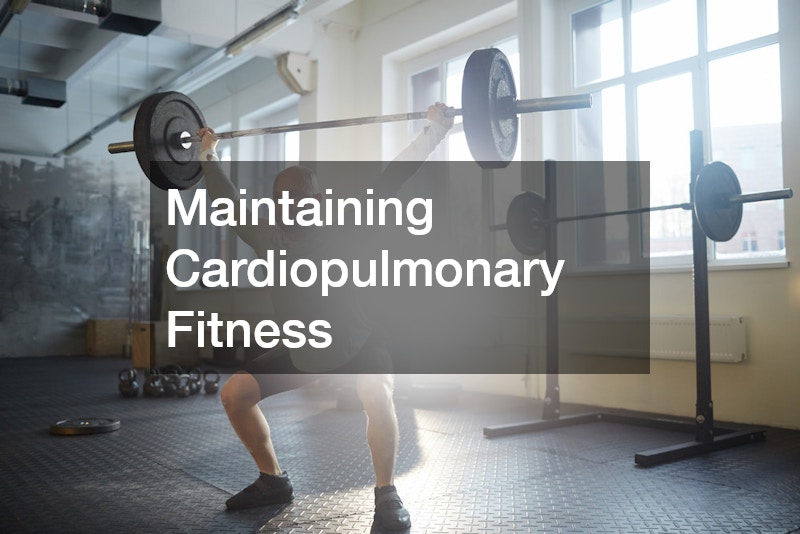
Maintaining Cardiopulmonary Fitness
Cardiopulmonary health is the foundation of energy, stamina, and longevity. A sedentary lifestyle can weaken the heart and lungs, increasing the risk of cardiovascular disease and respiratory issues. Busy adults often neglect regular cardio exercise due to time constraints, but even short daily routines can be effective.
Cardiopulmonary rehab programs are particularly beneficial for adults recovering from heart or lung conditions. These programs combine supervised exercise, nutritional guidance, and education to restore function and prevent complications. For those without a diagnosed condition, preventive strategies like brisk walking, jogging, cycling, or swimming can maintain cardiovascular health.
Practical tips for busy adults include scheduling 20–30 minute exercise sessions into the day, using stairs instead of elevators, and taking walking meetings whenever possible. Monitoring heart rate and breathing during activities ensures safe intensity levels. Combining aerobic exercises with strength training enhances both cardiovascular and musculoskeletal fitness.
In addition, incorporating breathing exercises such as diaphragmatic or pursed-lip breathing can improve lung capacity and efficiency. Regularly tracking vital signs, like blood pressure and oxygen saturation, helps detect early changes that may require professional attention. Maintaining cardiopulmonary fitness reduces the risk of chronic disease, increases energy levels, and improves overall resilience.
Eating Well on the Go
Nutrition is a cornerstone of preventive health, yet busy adults often rely on fast food or convenient meals. Making smart choices while dining out is crucial to support energy, weight management, and overall wellness.
When selecting meals at restaurants, look for nutrient-dense options. Choose grilled proteins, whole grains, and vegetables while limiting fried foods, sugar-laden sauces, and excess salt. Many establishments now offer healthy alternatives or customizable menus that align with dietary goals. Seeking the best restaurant food options doesn’t require sacrificing flavor—plenty of restaurants provide balanced meals that support preventive health.
Meal planning and preparation are other effective strategies. Preparing snacks like nuts, fruit, or yogurt, and keeping healthy meals on hand reduces reliance on fast food. Reading nutrition labels and practicing mindful eating helps control portion sizes and supports digestion.
Busy adults should also consider hydration, as adequate water intake supports metabolism, cognitive function, and energy levels. Incorporating small, consistent habits such as prepping meals on weekends, carrying a water bottle, and choosing fresh ingredients over processed options makes maintaining nutrition feasible even during hectic days.
Routine Health Screenings at Work or Home
Preventive screenings are vital for detecting issues early and managing chronic conditions. Many adults delay regular checkups due to time constraints, but integrating them into routine schedules can save time and improve outcomes.
Onsite physicals offered by employers are an excellent solution for busy adults. These exams provide basic health assessments, including blood pressure, cholesterol, glucose levels, and BMI, without requiring time off work. Knowing personal health metrics helps adults make informed decisions about lifestyle adjustments, preventive care, and follow-up with specialists.
Additional screenings may include mammograms, colonoscopies, and immunizations. Establishing a schedule for annual or periodic screenings ensures comprehensive coverage. Tracking results over time provides insight into trends and helps prevent complications. By prioritizing routine health screenings, adults can maintain wellness and detect potential issues before they escalate.
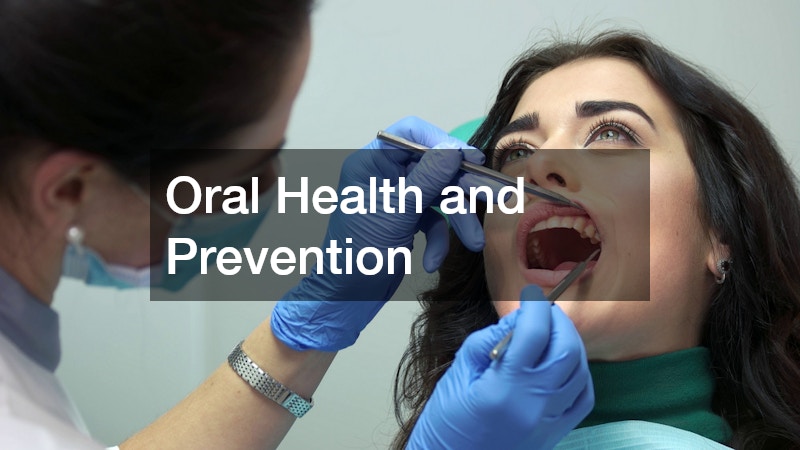
Oral Health and Prevention
Oral health is directly linked to overall wellness, yet it is often overlooked by busy adults. Poor dental hygiene can contribute to gum disease, tooth decay, and even systemic health issues such as heart disease or diabetes. Maintaining regular dental checkups is a key component of preventive care. Adults should aim for at least two dental visits per year to ensure that any problems are detected early.
Daily habits play a major role in preserving oral health. Brushing teeth at least twice a day with fluoride toothpaste, flossing daily, and using an antiseptic mouthwash can reduce plaque buildup and prevent gum disease. Choosing sugar-free snacks and avoiding sugary beverages also helps protect enamel.
For adults with specific concerns, preventive dental strategies can be personalized. For example, those prone to gum inflammation may benefit from professional cleanings every three months, while individuals with sensitive teeth may require specialized toothpaste or mouthguards. Additionally, keeping a small dental kit at work or in a bag—complete with floss and a travel toothbrush—can help maintain oral hygiene even on busy days.
By prioritizing oral health, adults not only prevent cavities and gum disease but also support systemic wellness, reducing risks for cardiovascular issues and maintaining confidence in social and professional interactions.
Eye Health and Vision Care
Vision is essential for safety, productivity, and overall quality of life. With the rise of digital work and screen time, preventive eye care has become more critical than ever. Regular visits to an optical service provider allow adults to monitor eye health, detect conditions such as glaucoma or cataracts, and update prescriptions for corrective lenses.
In addition to professional care, practical habits can protect vision. The 20-20-20 rule—taking a 20-second break every 20 minutes to look at something 20 feet away—reduces eye strain. Proper lighting, screen positioning, and ergonomic setups also help minimize fatigue. Nutrition plays a supportive role: foods rich in vitamin A, lutein, omega-3 fatty acids, and antioxidants protect the retina and prevent age-related decline.
Adults with specific vision concerns, such as dry eyes or digital eye strain, can incorporate eye drops, humidifiers, or blue light filters into their daily routine. Wearing sunglasses outdoors protects against UV damage, while proper contact lens hygiene prevents infections. By combining professional optical services with practical daily habits, adults can preserve vision and reduce the risk of long-term complications.
Home-Based and Assisted Care Options
For adults managing chronic conditions, recovery from illness, or mobility challenges, home-based support can be transformative. In home care services provide assistance with daily activities, medication management, mobility, nutrition, and companionship, allowing individuals to maintain independence while receiving professional support.
These services are especially valuable for busy adults balancing work, family, and health needs. Care providers can help ensure adherence to preventive routines, such as taking medications on time, performing daily exercises, or preparing balanced meals. They can also monitor vital signs, detect early signs of deterioration, and coordinate with healthcare professionals when needed.
Choosing the right in-home care service requires research. Adults should consider provider qualifications, availability, insurance coverage, and the ability to customize care plans. Integrating home-based support can significantly reduce stress, enhance quality of life, and ensure that preventive health practices are consistently followed, even in the face of busy schedules or mobility limitations.
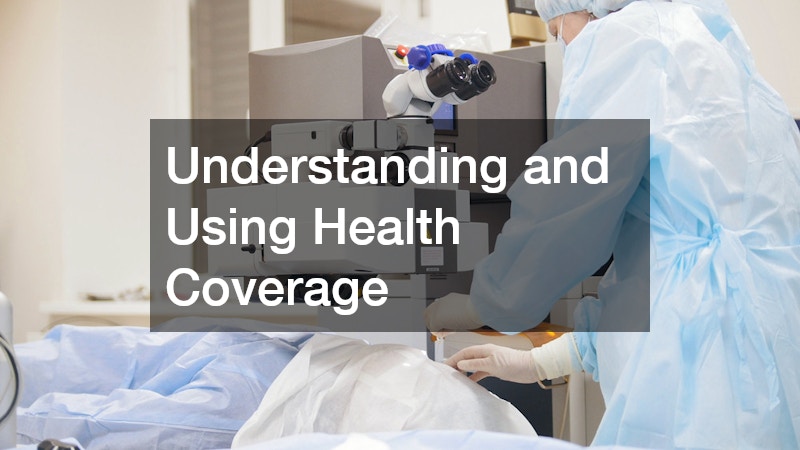
Understanding and Using Health Coverage
Navigating insurance plans is crucial for accessing preventive care without unnecessary financial burden. Many adults are unaware that insurance often covers preventive services, such as annual physicals, mental health therapy, dental checkups, and optical exams. Taking full advantage of these benefits allows adults to maintain wellness while minimizing out-of-pocket costs.
When selecting an insurance plan, adults should prioritize coverage for preventive services and chronic disease management. Understanding co-pays, deductibles, in-network providers, and limits on certain treatments ensures better planning and utilization of healthcare resources. Additionally, many plans now offer telehealth services, mental health counseling, and wellness programs that support preventive health goals.
Using insurance proactively means scheduling covered screenings, attending therapy sessions, and accessing home care or rehab services as needed. For example, an insurance plan might cover cardiopulmonary rehab for heart patients, mental health therapy sessions, or onsite physicals at work. By being informed and strategic, adults can fully leverage their insurance plans to maintain overall wellness and prevent costly health crises in the future.
Preventive health is essential for busy adults who want to maintain energy, longevity, and quality of life. By addressing physical, mental, and emotional health proactively, adults can reduce the risk of chronic diseases, enhance resilience, and maintain independence.
This guide has covered ten critical areas of preventive health: joint health, mental wellness, hormonal balance, cardiopulmonary fitness, nutrition, routine screenings, oral care, vision care, home-based support, and insurance coverage. Each area includes actionable steps, practical advice, and professional resources that adults can integrate into their daily lives.
Small, consistent habits—like taking short movement breaks, practicing mindfulness, choosing nutrient-dense meals, scheduling regular checkups, and utilizing insurance benefits—collectively have a profound impact on long-term wellness. Professional services, such as knee pain treatments, anxiety therapy, hormone imbalance therapy, cardiopulmonary rehab, and in-home care, further reinforce these preventive measures, ensuring comprehensive support for both body and mind.
By prioritizing preventive health, adults not only avoid unnecessary complications but also enhance productivity, energy, and overall well-being. The key is consistency: incorporating these strategies into daily life, leveraging available resources, and consulting professionals when needed ensures sustainable health outcomes. Busy adults who commit to preventive care can enjoy a balanced, active, and fulfilling life while reducing stress, improving performance, and securing long-term wellness.

